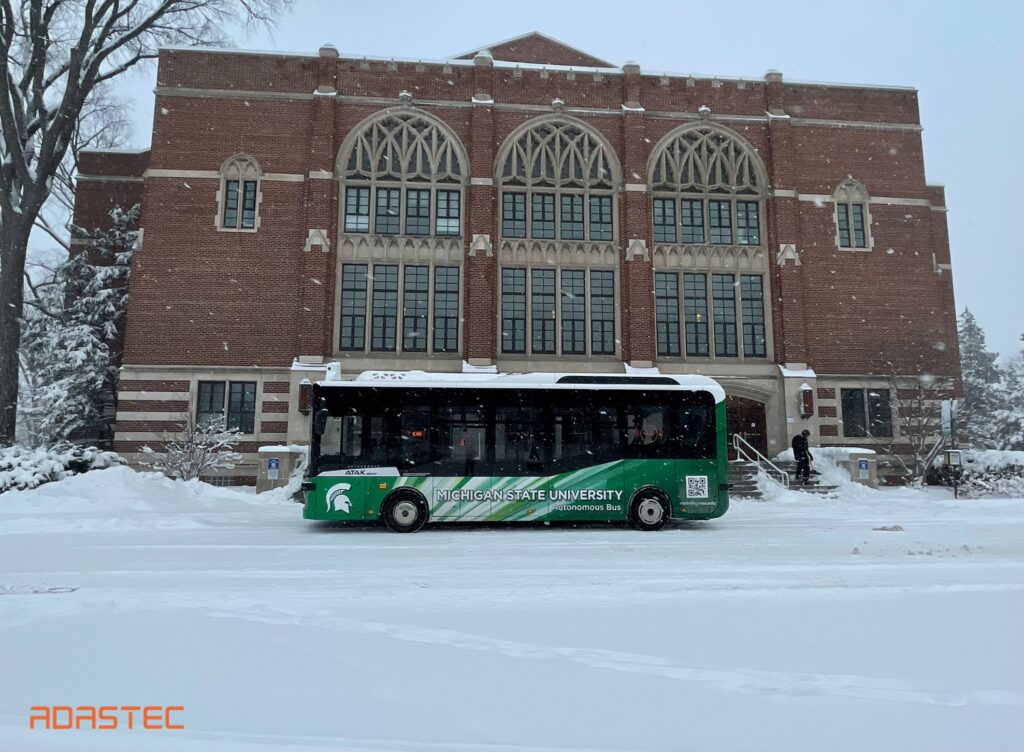 Cemre Kavvasoglu, product management director, North America at Adastec Corp, offers advice and insight into adverse weather condition testing, ahead of his presentation on the same theme at the ADAS & Autonomous Vehicle Technology Expo California Conference, which takes place September 20 & 21, 2023, in Santa Clara.
Cemre Kavvasoglu, product management director, North America at Adastec Corp, offers advice and insight into adverse weather condition testing, ahead of his presentation on the same theme at the ADAS & Autonomous Vehicle Technology Expo California Conference, which takes place September 20 & 21, 2023, in Santa Clara.
Prior to joining Adastec, Kavvasoglu worked as an autonomous driving development engineer at AVL. He then worked as an autonomous driving software engineer and technical product manager at Adastec in Istanbul, where he managed several EU deployments. He is currently responsible for managing deployments and OEM relations in North America, including the first-ever automated full-size bus service in the US, currently operating at Michigan State University.
Describe your presentation.
One of the main challenges of SAE Level 4-capable automated transit bus deployments is the varying weather conditions. Depending on where an automated transit bus gets deployed, it is vital to assess the environment’s climate, including extreme weather conditions such as heavy rain, snow, fog and extreme heat. To operate throughout varying seasons, Adastec has undertaken tremendous amounts of testing in various climates around the globe. Furthermore, Adastec has collected vast amounts of data and experience to not only handle a variety of environmental and weather conditions but also operate on different road settings during all four seasons.
What are the difficulties when operating in adverse weather conditions?
Operating automated transit buses in adverse weather conditions poses several challenges. Different sensor modalities are affected differently. For example, exhaust gases during cold weather can be detected as objects by lidar, and snowdrifts or raindrops can obstruct sensor visibility. Adastec addresses these challenges through the fusion of multiple sensor modalities, including radars, lidars, RGB cameras, thermal cameras and HD maps. By integrating our flowride.ai platform during the bus manufacturing process, Adastec ensures seamless sensor integration and eliminates hardware issues. Furthermore, we leverage our extensive experience and data collected in extreme weather conditions in Michigan, USA, and Norway to develop robust algorithms for adverse weather operations. We also work on our own sensor cleaning systems to maintain sensor performance.
How important is testing, and just how difficult is it to simulate adverse weather?
Testing algorithms for adverse weather conditions are crucial but challenging. Simulating adverse weather conditions accurately in virtual models is difficult due to the probabilistic nature of weather. Reproducing edge cases for physical testing with the same dynamic objects and vulnerable road users is nearly impossible. Adastec overcomes these challenges through its worldwide deployments, particularly in Michigan and Norway. We have collected extensive data sets of various sensor modalities in adverse weather conditions over two years of operation on public routes.
These data sets are used for initial algorithm development and testing whenever there are new advancements. Having OEM-fitted regular public transit buses with drivers enables the company
to gather valuable data during adverse weather conditions.
How do you help ensure human acceptance of automated buses?
Adastec employs various strategies to address challenges related to human acceptance and awareness of automated public transportation buses. We organize awareness-raising activities, leveraging digital platforms extensively, including project announcements, videos, demos and informative and cautionary signage. We also collaborate with universities such as Michigan State University, Istanbul Technical University, University of Michigan and University at Buffalo. These collaborations extend beyond technical projects to include research on the social impacts of automated public transportation buses. By engaging with academia and the community, we aim to foster greater acceptance and understanding of our technology. Additionally, one of our key objectives in undertaking university projects is to inspire and support aspiring engineers in this field, fostering a brighter outlook for the future.
What new technologies could improve performance in poor weather?
Several technologies can enhance performance in poor weather conditions. Sensor cleaning systems are crucial for maintaining clear sensor visibility by removing raindrops, snowflakes and other debris. V2I (vehicle-to-infrastructure) and V2V (vehicle-to-vehicle) communication systems enable enhanced situational awareness and coordination among vehicles and infrastructure, improving safety and efficiency in adverse weather. Better weather prediction capabilities can also play a significant role in optimizing operations during adverse conditions.
By utilizing advanced sensors, communication systems and accurate weather forecasting, automated transit buses can navigate challenging weather conditions more effectively, ensuring passenger safety and reliable service.
Don’t miss Cemre Kavvasoglu’s presentation, which is part of the ‘Real-world test and deployment – lessons learned’ session taking place on Day 2 (Sept 21) of the conference (rates apply), alongside the free-to-attend exhibition at ADAS & Autonomous Vehicle Technology Expo California.



